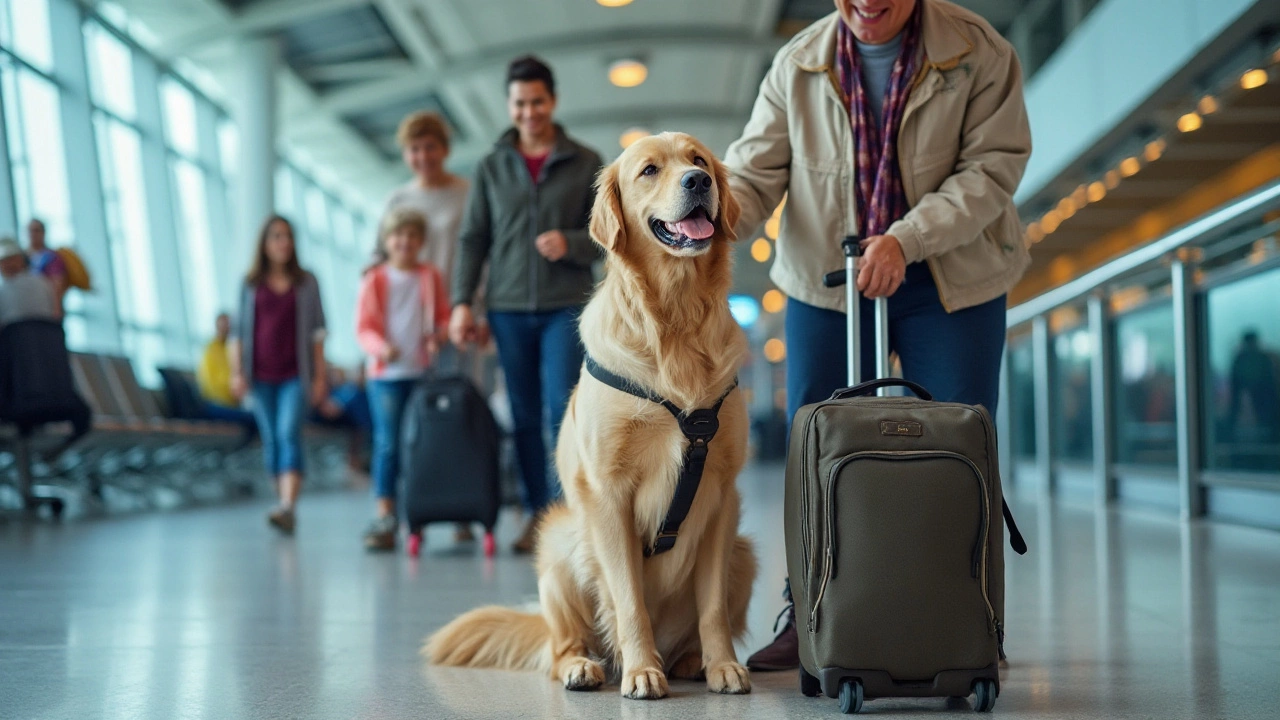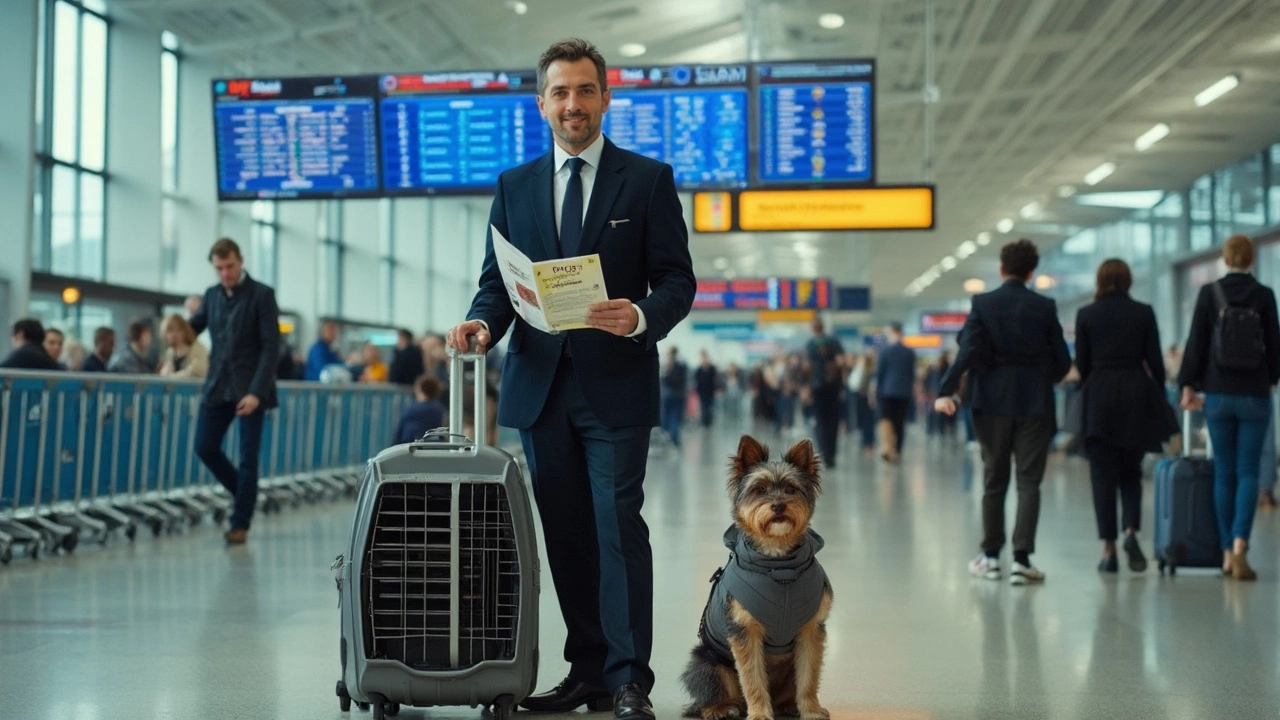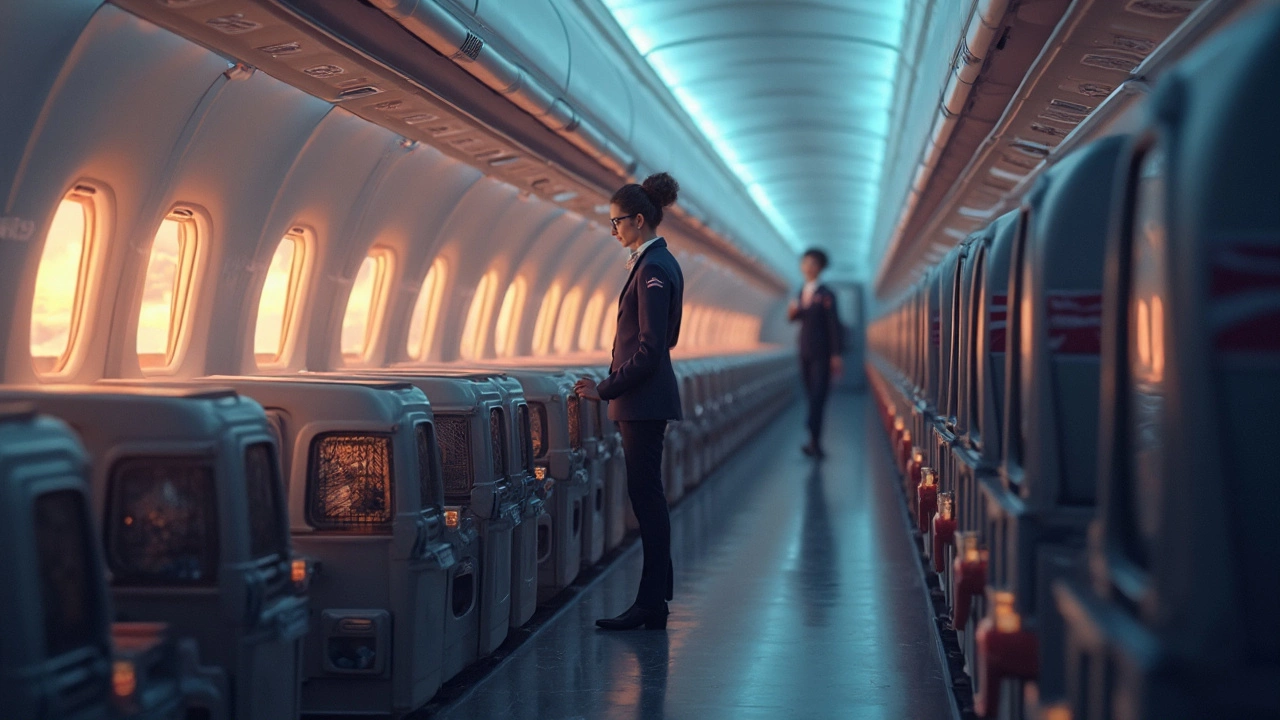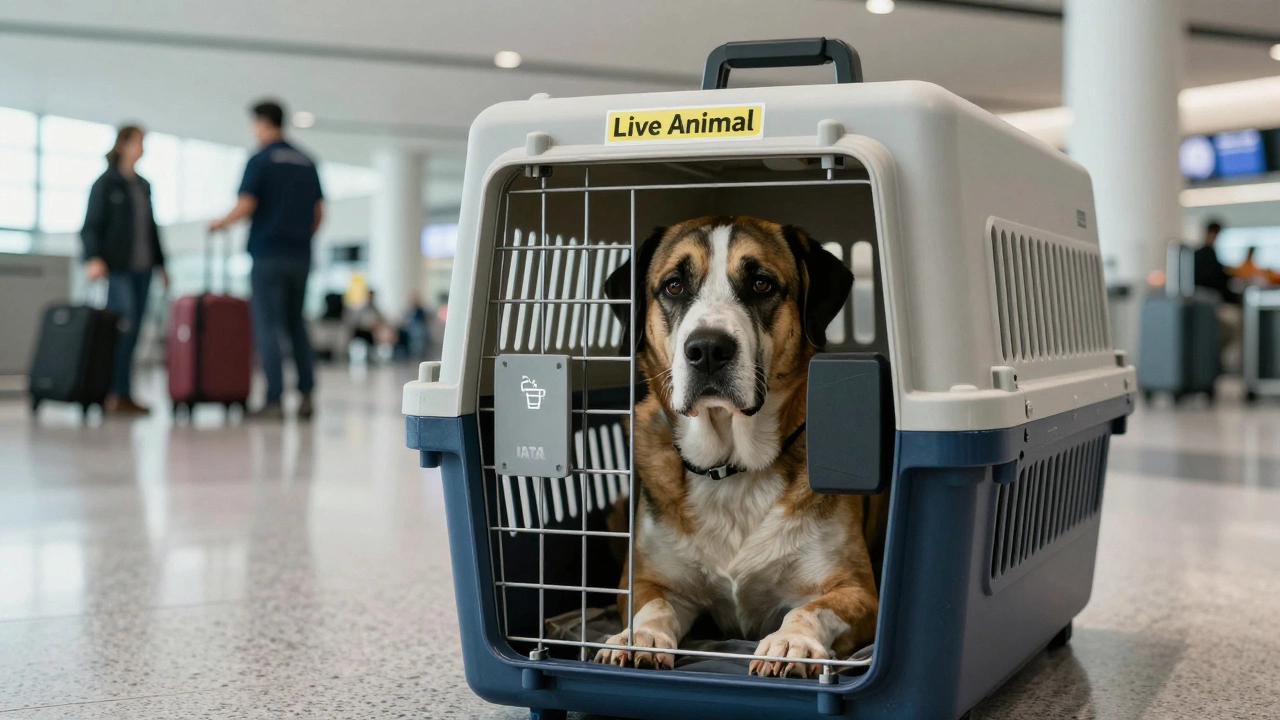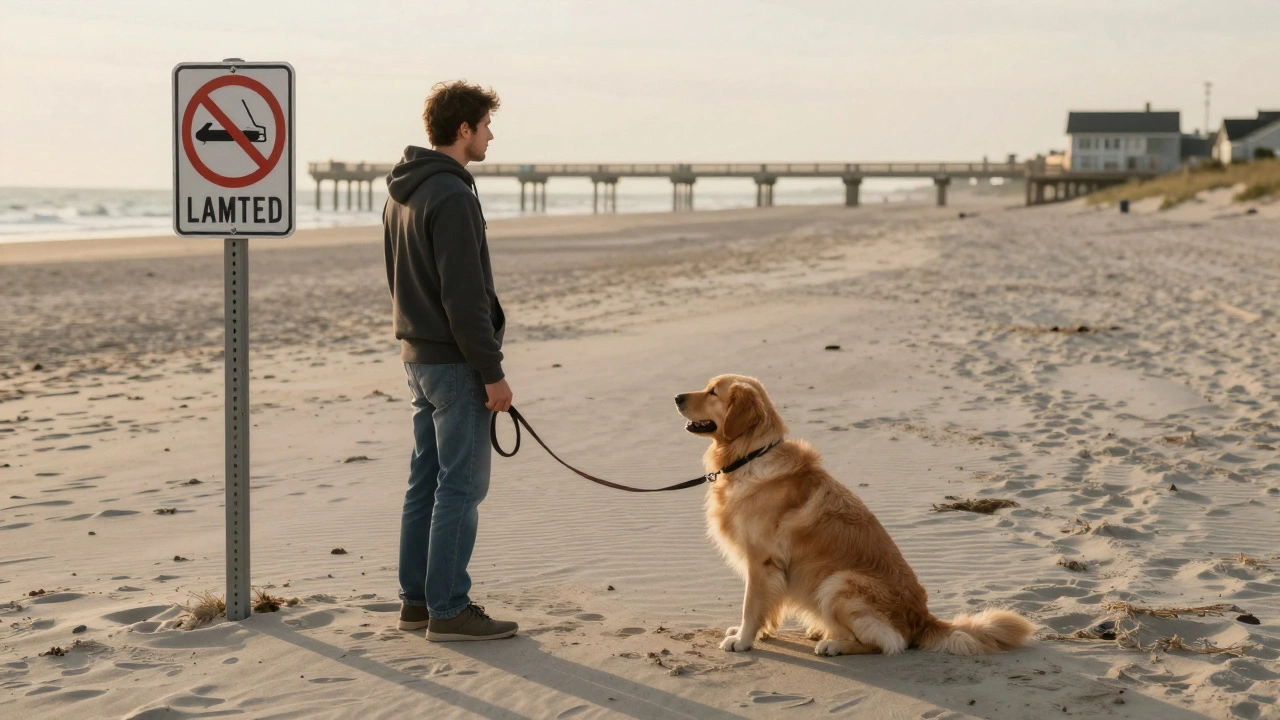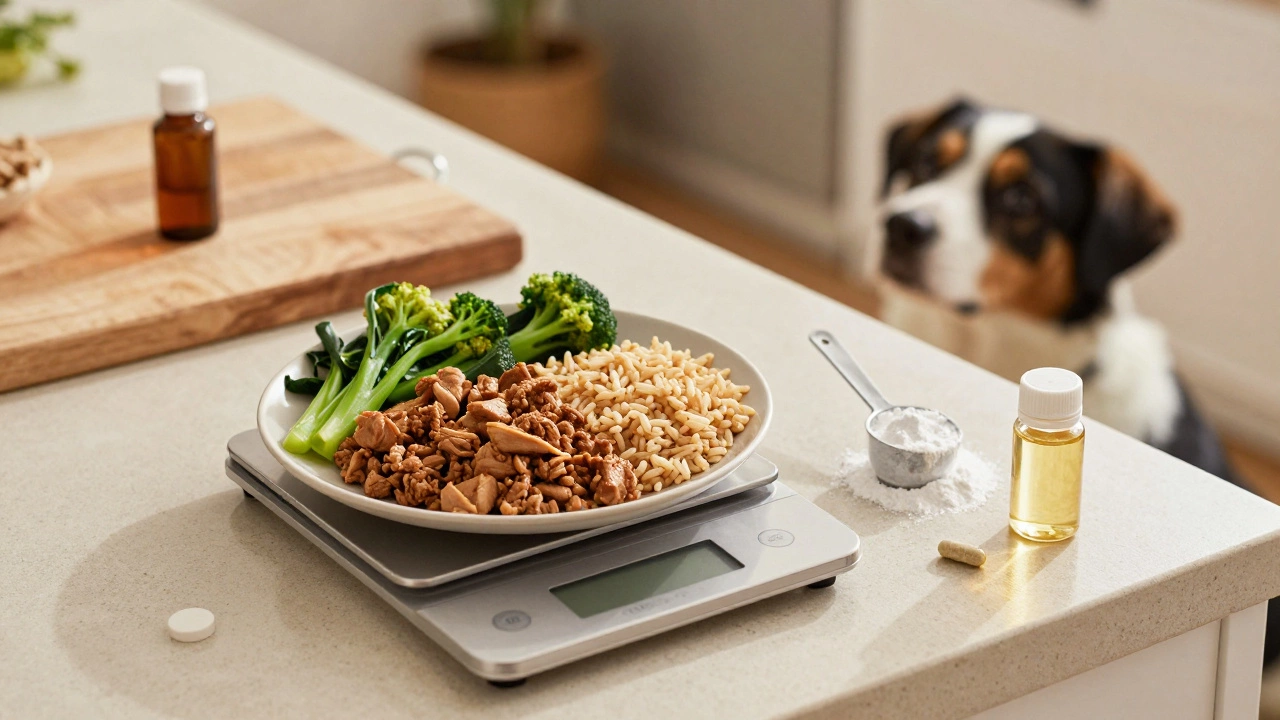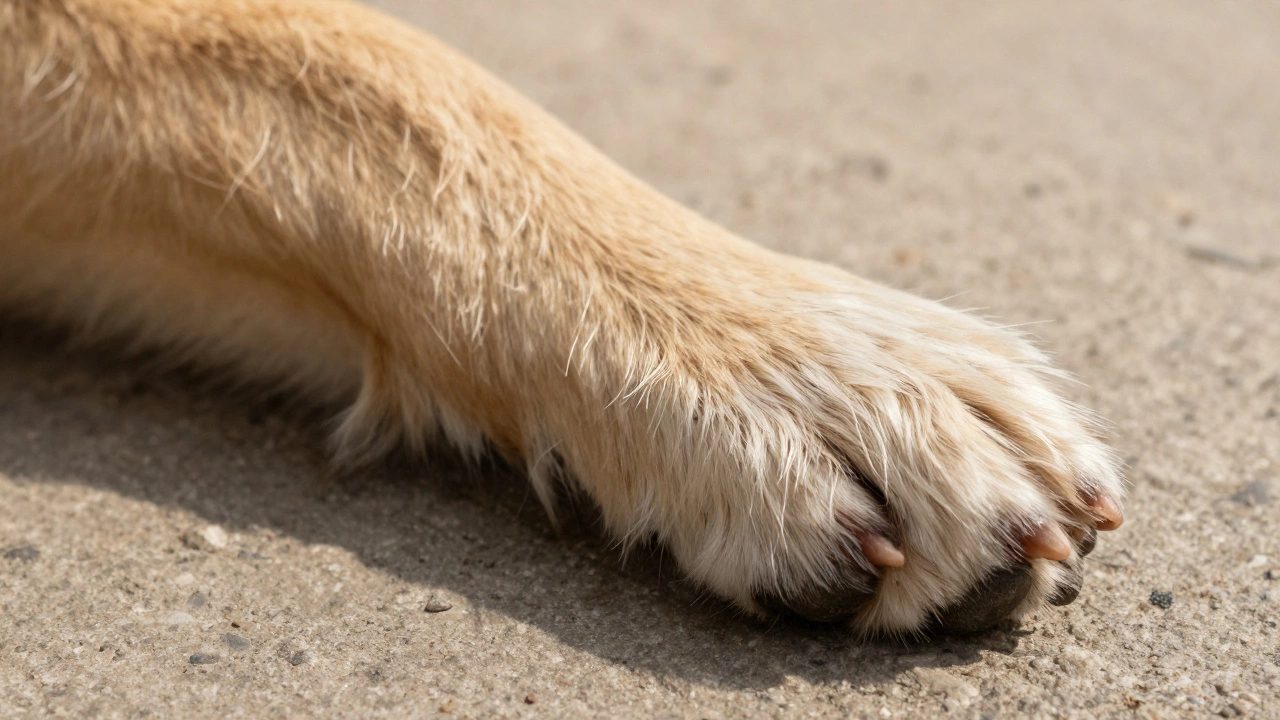You’d be surprised how many people find out their dog carrier isn't TSA-approved when they're already at the airport. Instant stress, right? Thing is, there’s no single “TSA size”—the Transportation Security Administration mostly cares about screening the pet and carrier, not the actual in-cabin size. That part’s up to your airline. If your carrier doesn’t fit the airline rules, your pup’s not boarding in-cabin, no matter how cute they look.
Most airlines stick to a max carrier size around 18” long x 11” wide x 11” high (that’s roughly 45 x 28 x 28 cm), but some shave those numbers down even more—sometimes by a couple of inches in height or width. It’s not just about dimensions, though. The carrier needs to fit under the seat in front of you, so if yours is soft-sided, there’s a little squish room, but not much. Hard-shell carriers? Almost no wiggle space at all.
Don't guess the measurements. Grab a tape measure, get your dog to stand up, and measure length (tip of nose to base of tail) and height (floor to top of head or ears, whichever sticks up more). Add a couple of inches so your pet can turn and lie down. Then check your carrier’s outside measurements—not just the box, but any wheels, handles, and side pockets. Those count against the airline’s size restriction. Skipping this step is the fastest way to get bumped.
- Why Carrier Size Matters for TSA and Airlines
- The Approved Size Limits: Inches and Centimeters
- How to Measure Your Dog and Carrier (No Guessing!)
- Airline Tricks and Hidden Rules
- Picking the Best TSA-Approved Carrier (With Real Examples)
- Quick Tips for Hassle-Free Flying With Your Dog
Why Carrier Size Matters for TSA and Airlines
The rules around dog carrier size can catch even experienced travelers off guard. The main reason: airlines and security agencies have different priorities, but both have the power to mess up your travel plans if you’re not prepared.
The TSA dog carrier size gets a lot of attention online, but the TSA doesn’t set limits for in-cabin carriers. What they actually do is check your dog and carrier at security, making sure your pet is removed safely from the bag so they can screen both. This process takes just a couple minutes if your carrier is simple—no extra pockets packed with gear, nothing blocking the x-ray. TSA is mostly just checking for safety risks, not measuring your bag.
Airlines are much stricter. Their biggest concern is whether that carrier slides under the seat in front of you. If it doesn’t, your options are pretty rough: sending your pet as cargo, missing your flight, or even getting turned away at check-in.
Take a look at how airline size rules compare:
| Airline | Max Length | Max Width | Max Height |
|---|---|---|---|
| Delta | 18" | 11" | 11" |
| United | 18" | 11" | 11" |
| American | 18" | 11" | 11" |
| JetBlue | 17" | 12.5" | 8.5" |
| Southwest | 18.5" | 8.5" | 13.5" |
As you can see, there’s no single universal size. Some airlines are a bit more lenient, but most stick close to the 18x11x11 inch zone. Always double-check not just the airline but the type of aircraft—some smaller planes have even tighter space under the seat.
If your carrier is too big by even half an inch, gate agents have every right to stop you from boarding with your dog. No amount of arguing will change their mind because it’s a safety thing, not just a comfort thing. This is one of those rules that isn’t flexible; bending it usually means someone else loses foot room, or worst case, your carrier’s blocking the aisle in an emergency.
One more thing: international flights and non-U.S. airlines sometimes have different, and even smaller, specs. Always check both your outbound and return flights, or you could end up stranded with your dog in a different country.
The Approved Size Limits: Inches and Centimeters
Here’s the thing: the TSA dog carrier size you need to worry about is all about the airline. Every carrier brand says they’re “airline approved,” but airlines play by their own rules. If your carrier is too big, it won’t slide under the seat, and you’ll be stuck making last-minute changes at the airport. Nobody wants that.
Most major U.S. airlines stick close to these basic limits for in-cabin dog carriers (all measurements for soft-sided carriers):
| Airline | Max Length | Max Width | Max Height |
|---|---|---|---|
| American | 18" (46 cm) | 11" (28 cm) | 11" (28 cm) |
| Delta | 18" (45 cm) | 11" (28 cm) | 11" (28 cm) |
| United | 18" (46 cm) | 11" (28 cm) | 11" (28 cm) |
| Southwest | 18.5" (47 cm) | 8.5" (22 cm) | 13.5" (34 cm) |
| JetBlue | 17" (43 cm) | 12.5" (32 cm) | 8.5" (22 cm) |
Even a half-inch over can get your carrier rejected. Soft-sided carriers do have a bit of give (think canvas or nylon), but you can't squish a hard shell to fit. Some international airlines are much stricter, sometimes maxing out at 16 inches or less in length, so always check your airline’s site for updates—rules can shift without warning.
A few quick tips so you don't get tripped up:
- Always measure your carrier from the outermost points, including wheels and pockets.
- Double-check your airline’s pet page before you buy a new carrier—some have slightly different seats on different planes.
- If you fly a lot, look for a carrier that stays under 17" long and 11" high. This usually gets you on any major U.S. airline without a headache.
- Don’t trust the “airline approved” label alone—those stickers mean nothing at the gate.
Even though it seems picky, getting this right means you and your dog breeze past check-in and security. No one likes starting a trip arguing with airline staff.
How to Measure Your Dog and Carrier (No Guessing!)
Messing up the size for your dog’s carrier is a fast track to getting turned away at check-in. Here’s how to do it right, so you and your dog aren’t stuck on the sidewalk.
First, measure your dog. Don’t eyeball it—dogs look smaller when they’re curled up, but airlines want them to fit while standing, turning, and lying down naturally. Grab a flexible tape measure. If your dog’s anything like Finnian (my kid’s favorite sidekick, a mid-sized mutt with a stubborn streak), treats help keep them still for a few seconds.
- Main keyword: TSA dog carrier size
- Length: Measure from the tip of the nose to the base of the tail (not the tip—that’s fluff and doesn’t count).
- Height: From the floor to the top of the head or ears (whichever sticks up higher when standing).
- Width: That’s rarely asked for, but if your dog is built like a tank, check shoulder-to-shoulder.
Add an extra two or three inches in each direction so your dog can get comfy and not be wedged in.
Now, measure the carrier. Don’t trust the box it came in or what the tag says—manufacturers sometimes round down. Lay the carrier on its side and measure:
- Length (front to back, including any wheels or built-in handles)
- Width (side to side at the base, including any bulges, pockets, or hard corners)
- Height (bottom to highest point, even if the top is soft or flexible)
Most airlines check the carrier’s outside measurements, not inside. That means even those little mesh pockets or the smallest bump from a handle count in the final numbers. Double-check your airline’s rules online for the exact numbers. Take a photo of your measurements next to a ruler in case staff doubt you—yes, that happens sometimes.
It takes ten minutes to measure but saves you hours of stress. If you’re between two sizes, always pick the smaller carrier that will still fit your dog (and the underseat space). Don’t rely on guesswork—you can’t charm a gate agent if your carrier is bulging by even an inch.

Airline Tricks and Hidden Rules
It’s wild how much airlines keep the goalposts moving when it comes to dog carriers. You don’t just need to know the size—some airlines pull extra rules out of nowhere, and if you’re not ready, it gets expensive or embarrassing quick.
For starters, airlines each set their own maximum carrier measurements for in-cabin pets, and they don’t always make it easy to find this info. Sometimes the exact size allowed changes depending on the type of plane or even where you’re sitting. Here’s a quick look at what some major U.S. airlines allow in 2025:
| Airline | Carrier Size Limit (inches) | Notes |
|---|---|---|
| Delta | 18 x 11 x 11 | Soft or hard carriers accepted |
| American | 18 x 11 x 11 | Soft-sided can slightly exceed by 1" |
| United | 18 x 11 x 11 | Must fit completely under the seat |
| Southwest | 18.5 x 13.5 x 8.5 | Soft-sided only, no hard cases |
| JetBlue | 17 x 12.5 x 8.5 | Max pet+carrier weight 20 lbs |
But there’s more. The TSA dog carrier size search won’t help if you miss these hidden details:
- Weight restrictions: Some airlines cap the combined weight of dog and carrier at 15-20 pounds—even if your carrier is the perfect size. Don’t just look at size; check the fine print for weight.
- Limit per cabin: Even if lots of people want to fly with pets, many airlines only allow 4-6 pet carriers per flight. If you book late, you could be out of luck.
- Seats that won’t work: Bulkhead, exit row, and some window seats don’t allow pets under the seat at all—always check your seat assignment before you pay extra for upgrades.
- International flights: Even stricter rules, and some countries ban in-cabin pets altogether. If you’re headed overseas, double-check every leg of the trip.
- Seasonal rules: During hot weather, certain carriers and routes may be restricted or unavailable for pets—airlines don’t always announce this up front.
One more thing: staff at the gate have the final say on what gets on board. It doesn’t matter if you passed check-in. If the carrier looks too big, or your dog can’t stand up and turn around, you could be turned away at boarding. Always have a Plan B (like knowing the cost and rules for bringing your dog in checked baggage or cargo).
The takeaway? Don’t trust an online checklist alone. Double-check everything with your airline—online and by phone—before you buy your ticket. It’s not just about following the rules. It’s about sidestepping last-minute surprises that could leave you or your dog grounded.
Picking the Best TSA-Approved Carrier (With Real Examples)
Choosing the right carrier feels like picking jeans that actually fit: the numbers matter, but so does the flexibility. Airlines usually set their max size for in-cabin carriers, so matching those measurements is your top priority. Skip the no-name stuff and go for brands that actually say they fit “under the seat”—it’ll save you a lot of grief at check-in.
Here are a few carriers that passengers and airline staff say pass the test for most U.S. flights:
- Sleepypod Air In-Cabin Carrier—This one’s a favorite for nervous travelers. It’s soft-sided and adjustable, letting you shrink or expand the size to literally slide under most seats. Officially, it sits at around 22" L x 10.5" W x 10.5" H, but it squeezes a bit smaller. Costs more, but it’s built like a tank (and looks good too).
- Sherpa Original Deluxe—People love this bag because it’s mostly accepted on Delta, United, Southwest, and Alaska. Dimensions are 17" L x 11" W x 10.5" H. Sherpa’s actually been approved for airline “Guaranteed On Board” on some airlines, so you can check their site before flying if you're worried.
- Amazon Basics Soft-Sided Carrier—Budget pick, but it works. The "medium" size (16.5" L x 9.4" W x 9.8" H) sits under most seats, though barely for the smaller planes. Zippers are sturdy enough, and it's easy to clean if your dog has an accident mid-flight (been there, done that).
- Petmate Two Door Top Load Kennel—If your airline does allow hard-sided carriers, this one measures about 19" L x 12.6" W x 10" H. The two-door thing is helpful for getting nervous pups in and out. Keep in mind, some airlines don’t let hard-shell carriers in the main cabin anymore, so check before you splurge.
A few quick tips before buying:
- Don’t trust “airline approved” printed on a tag—it means nothing without double-checking the actual sizes against your airline’s chart.
- Fabric carriers offer more wiggle room under the seat, and they fold up when storing at home.
- Look for mesh panels on at least two sides, solid zippers, and a pad you can actually wash. Trust me, you want easy cleanup.
Scrutinize the measurements for the TSA dog carrier size required—not just the inside space, but those handles and any outer pockets too. I once saw someone get denied because of a dangling water bottle pouch that stuck out past the seat. Measure twice, regret never.
Quick Tips for Hassle-Free Flying With Your Dog
Flying with your pup doesn’t have to be a nerve-wracking guessing game. These tips are honestly what make or break a smooth trip. If you care about avoiding hassles, stick with the basics and don’t cut corners. Let’s break down what actually works:
- TSA dog carrier size is only part of the battle—your carrier has to fit the airline’s under-seat dimensions. Always double-check the airline’s website in the month you book. Rules change, especially right before busy travel seasons.
- If you can, call your airline right after booking your own ticket. Most airlines cap in-cabin pets per flight (often at 5 or 6 total), so waiting could mean your furry friend stays home despite everything else being perfect.
- Label your carrier with your dog’s name, your name, and phone number. It sounds basic, but a surprising number of people forget. If your carrier gets separated, this will make life way simpler for everyone.
- Puppies and small breeds usually fly easier in soft-sided carriers. These flex a bit and slide under seats better than hard shells, but always keep within posted size limits.
- Bring extra pee pads—even if your dog never has accidents at home, flying is a different world. My son Finnian learned this the hard way with his beagle, Penny, on a two-hour wait at a gate. Don’t get stuck cleaning your seat with airplane napkins.
- Feed your dog a light meal about four hours before you fly. A full belly plus travel nerves runs the risk of unwanted surprises mid-flight.
- Freeze your dog’s water bowl the night before (most collapsible travel bowls freeze fine). It’ll melt slowly during your trip and keep your pup hydrated without risk of spills at security.
Here’s a quick data check on what U.S. airlines expect at check-in so you can plan for the real airport experience:
| Airline | Max Carrier Size (inches) | Pet Reservation Needed? | Fee |
|---|---|---|---|
| United | 18 x 11 x 11 | Yes | $125 |
| Delta | 18 x 11 x 11 | Yes | $95 |
| American | 18 x 11 x 11 | Yes | $125 |
| Southwest | 18.5 x 13.5 x 8.5 | Yes | $95 |
Make copies of your dog’s vaccination record—airlines can ask, and so can TSA. A printout tucked in your bag beats hunting on your phone with one bar of airport WiFi. And when boarding, have some treats handy. Nothing takes the edge off a chaotic terminal like a distracted, happy pup (and a calm owner, too).


